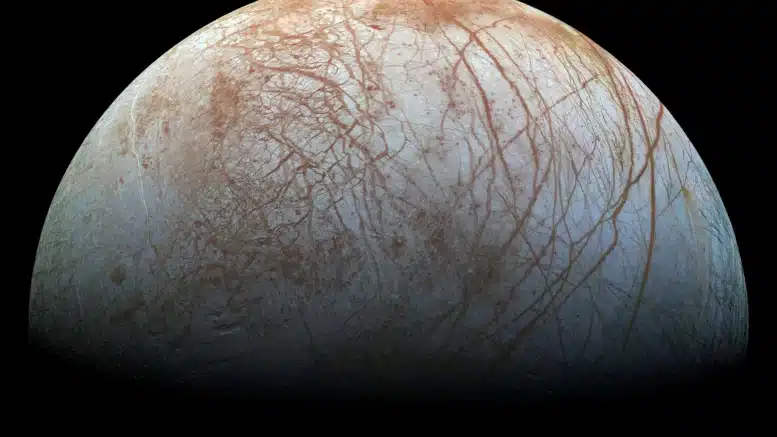Beneath the icy surface of Jupiter’s moon Europa lies a potentially habitable environment, believed to harbor a salty ocean, presenting an enticing prospect for extraterrestrial life. However, a critical question remains unanswered: does Europa’s ocean contain oxygen, a vital ingredient for life as we know it? Recent findings, derived from data collected by NASA’s Juno mission and published in the journal Nature Astronomy, shed light on this intriguing inquiry, revealing that Europa’s surface generates oxygen, albeit at levels lower than initially hoped for by some astronomers.
Led by Jamey Szalay, a plasma physicist at Princeton University, the study examined data obtained from Juno’s Jovian Auroral Distributions Experiment (JADE) instrument as the spacecraft traversed the plasma enveloping Europa. While the researchers were primarily focused on measuring hydrogen, a byproduct of the breakdown of frozen water molecules on Europa’s surface, they utilized this data to estimate the production rate of oxygen. They determined that Europa’s surface generates approximately 13 to 40 pounds of oxygen per second, a modest amount compared to earlier, more optimistic estimates.
The process by which Europa produces oxygen differs from Earth’s photosynthesis. Instead of biological activity, charged particles from space bombard the moon’s icy crust, breaking down water molecules into hydrogen and oxygen. This oxygen may then migrate into Europa’s subsurface ocean, potentially interacting with volcanic material from the seafloor to create conditions conducive to life.
While the study’s findings may temper expectations regarding Europa’s habitability, Fran Bagenal, a planetary scientist at the University of Colorado Boulder, emphasizes that the precise oxygen requirements for life remain uncertain. Furthermore, Carl Schmidt, a planetary scientist at Boston University, notes that the study only addresses oxygen production on Europa’s surface, leaving questions about its fate unanswered.
Future missions, such as the European Space Agency’s Jupiter Icy Moons Explorer and NASA’s Europa Clipper, are poised to provide further insights into Europa’s potential for harboring life. These missions, equipped with advanced instruments, will delve deeper into Europa’s mysteries, offering scientists a more comprehensive understanding of this enigmatic moon. As researchers continue to analyze data from Juno and anticipate upcoming missions, the exploration of Europa promises to yield invaluable discoveries, shaping our understanding of the habitability of icy worlds beyond our own.

